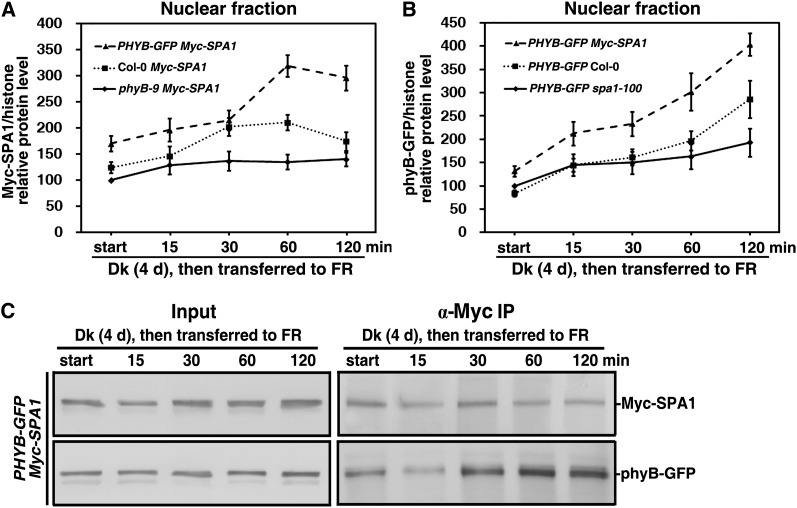Figure 7.
PhyB and SPA1 Coordinately Promote Nuclear Transport of Each Other during the Transition from Dark to FR.
Seedlings were grown in the dark (Dk) for 4 d and subsequently transferred to FR light for 15, 30, 60, or 120 min. The fluence rate of the FR light was 18.1 µmol·m–2·s–1. All lines or double mutants, including Myc-SPA1, PHYB-GFP, phyB-9 Myc-SPA1, PHYB-GFP Myc-SPA1, and PHYB-GFP spa1-100, were of the Col-0 ecotype.
(A) Quantification of relative Myc-SPA1/histone protein levels corresponding to Supplemental Figure 5A online, showing that nuclear accumulation of Myc-SPA1 increased with phyB levels during the transition from dark (Dk) to FR. Error bars represent the sd from triplicate experiments.
(B) Quantification of relative phyB-GFP/histone protein levels corresponding to Supplemental Figure 5B online, showing that nuclear accumulation of phyB-GFP increased with SPA1 levels during the transition from dark to FR. Error bars represent the sd from triplicate experiments.
(C) In vivo co-IP of phyB-GFP by Myc-SPA1 showing that the strength of Myc-SPA1 and phyB-GFP binding was enhanced during the transition from dark to FR. Native protein extracts were prepared from PHYB-GFP Myc-SPA1 seedlings harvested at each time point during the transition from dark to FR and incubated with anti-Myc–conjugated agarose in the dark. Co-IP was performed as in Figure 6D.

